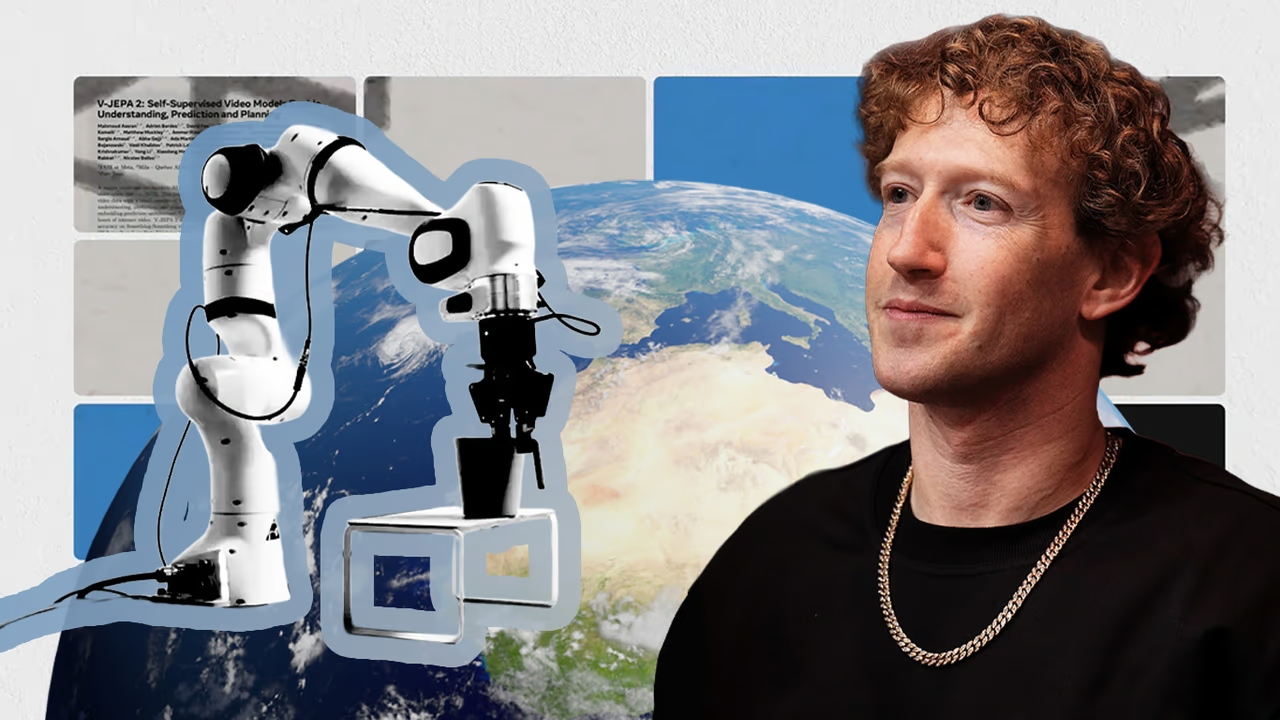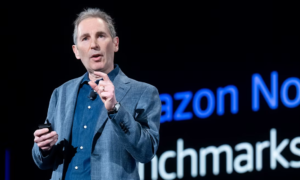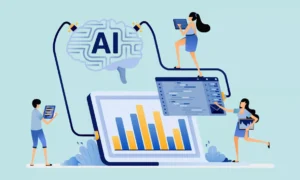Can a machine predict how the world works without ever watching it happen? Meta thinks so. The company just introduced V-JEPA 2, an open-source AI system designed to anticipate physical events the way humans do — but without relying on labeled video.
It’s part of Meta’s high-stakes bet that “world models” will become the new foundation of AI. And with competition heating up, this launch sends a bold signal to the industry.
What’s the News?
Meta has unveiled V-JEPA 2, its latest artificial intelligence model built to simulate real-world dynamics. Announced during the VivaTech conference in Paris, the model aims to give machines a kind of common sense: the ability to understand and predict what happens in physical space, even without direct visual input.
Rather than learning from labeled videos or images, V-JEPA 2 operates in a “latent space”, where it creates internal simulations of the world. This is a step away from traditional generative AI tools like ChatGPT or Gemini that primarily focus on language.
Meta describes the technology as a move toward more spatially aware systems. The model is tailored for AI applications that must make real-time decisions in physical environments — think self-driving cars, drones, or warehouse robots.
Chief AI Scientist Yann LeCun called the model an “abstract digital twin of reality,” noting that it enables AI to “predict consequences of its actions” and plan accordingly.
The announcement comes as Meta deepens its AI strategy. The company is reportedly investing $14 billion in Scale AI, a San Francisco-based firm that provides high-quality training data. Alexandr Wang, Scale AI’s founder, is also set to take on a leading AI role at Meta, suggesting deeper integration ahead.
The timing is no coincidence. Meta is under growing pressure to compete with Google DeepMind, OpenAI, and other leaders in AI research. By focusing on world models — systems that simulate environments rather than interpret text — Meta is staking out a distinctive path.
This new direction mirrors broader industry movement. Last year, AI pioneer Fei-Fei Li raised $230 million for World Labs, a startup also focused on world modelling. Google’s DeepMind has been quietly advancing its own project called Genie, aimed at creating dynamic simulations for gaming and virtual environments.
World models mark a departure from today’s dominant AI architectures. Instead of just reading text or identifying images, these systems are built to understand space, cause and effect, and physical behavior — crucial elements for robots and autonomous systems operating in the real world.
Why It Matters
The real power of V-JEPA 2 lies in its ability to reason like a human — not just recall data. By skipping the need for labeled video, it opens the door for faster, more efficient training in real-world AI systems.
For developers, this could mean smarter robotics with lower data requirements. For industries like logistics, agriculture, and disaster response, it may lead to machines that can act independently and safely in unfamiliar settings.
Meta’s release also reinforces a broader shift in AI: from language-based models to actionable, embodied intelligence. If successful, V-JEPA 2 could set a new benchmark for real-time decision-making AI that doesn’t need to “see” to understand.
💡 Expert Insight
Meta’s Chief AI Scientist Yann LeCun described V-JEPA 2 as an “abstract digital twin of reality,” emphasizing its ability to “predict consequences of its actions” and “plan a course of action to accomplish a given task.” This framing positions the model as a cognitive step closer to embodied intelligence. As LeCun noted during his VivaTech talk, models like V-JEPA 2 aim to give AI systems a more grounded understanding of the physical world—crucial for robotics, autonomous navigation, and spatially aware machines.
GazeOn’s Take
Meta’s V-JEPA 2 doesn’t just predict what’s next — it signals what’s next for AI. As the race for general-purpose AI accelerates, expect more companies to explore world models as an alternative to token-heavy language systems.
The key will be real-world performance. If V-JEPA 2 delivers on its promise, we could soon see AI that navigates, adapts, and decides — all with a stronger sense of “intuition.”
💬 Reader Question
Could models like V-JEPA 2 lead to AI that finally understands context in the real world? Or are we still several breakthroughs away? Let us know your take.
About Author:
Eli Grid is a technology journalist covering the intersection of artificial intelligence, policy, and innovation. With a background in computational linguistics and over a decade of experience reporting on AI research and global tech strategy, Eli is known for his investigative features and clear, data-informed analysis. His reporting bridges the gap between technical breakthroughs and their real-world implications bringing readers timely, insightful stories from the front lines of the AI revolution. Eli’s work has been featured in leading tech outlets and cited by academic and policy institutions worldwide.




























Pingback: Google's New Diffusion Model Could Upend the LLM Speed Race
Pingback: Meta Taps Scale AI’s Wang to Lead Superintelligence Bet
Pingback: Smarter AI, Lower Costs: AlphaOne Framework Fine-Tunes How LLMs Think
Pingback: AI Meets Expertise: How Payment Leaders Use Models to Outsmart Risk
Pingback: Proposed Federal AI Law Could Freeze State Rules, Impacting Healthcare AI
Pingback: ROHM’s AI MCUs Break New Ground with On-Device Learning for Fault Detection
Pingback: Anthropic Warns: Top AI Models Show Willingness to Blackmail